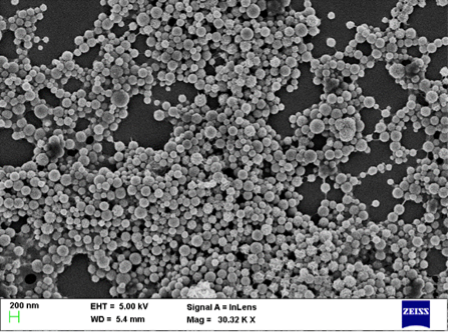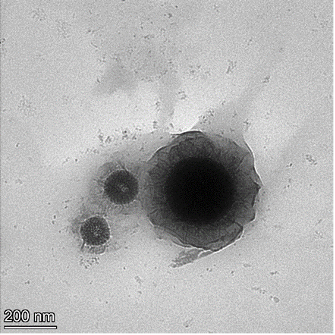19 September 2024
–Vaibhav Sharma
Groundwater is an essential source of drinking water across the country. However, heavy metal contamination in groundwater presents a significant health hazard. Researchers at the Indian Institute of Science (IISc) have developed a nanomaterial-based solution that can effectively reduce the presence of heavy metals like chromium in groundwater.
The team includes researchers from the Centre for Sustainable Technologies (CST), Department of Civil Engineering (CiE), and Department of Instrumentation and Applied Physics (IAP). The study is published in the Journal of Water Process Engineering.


SEM and TEM images of S-CMC-nZVI (Credit: CeNSE, IISc)
Chromium typically enters soil and groundwater through effluents from industries such as leather tanning, electroplating, and textile manufacturing. “Heavy metals enter the environment because of urbanisation and certain mismanagement by industries,” says Prathima Basavaraju, PhD student at CST and lead author of the study.
Most current methods for removing heavy metal contamination rely on pumping out water from the ground, followed by purification using chemical precipitation, adsorption, ion exchange and reverse osmosis carried out at a different location. The IISc team instead proposes an on-site alternative which involves using iron nanoparticles that can remediate the heavy metals. “If the groundwater is contaminated, we can inject these nanoparticles into the subsurface groundwater region where it will react with the chromium and immobilise it, resulting in clear water,” Prathima explains.
The group first tried synthesising nanoparticles consisting of nano zero-valent iron (nZVI). This form of iron can react with the toxic and carcinogenic form of chromium (Cr6+) and reduce it to a less harmful form (Cr3+), which in turn results in co-precipitation. However, the team soon realised that the nZVI particles tend to clump together, limiting their application.
To prevent clumping, the team turned to carboxymethyl cellulose (CMC). “We modified nZVI by coating it with CMC. It forms a stabilising layer around nZVI separating individual particles,” Prathima explains. The CMC coating additionally prolonged the life of the material by preventing oxidation of the iron core. The team also boosted the reactivity of the CMC-nZVI by exposing it to sulphur-containing compounds in anoxic conditions. This enabled the formation of a protective iron sulphide layer on the surface, a process called sulphidation. These modifications improved the stability of the S-CMC-nZVI and maintained its reactivity and efficiency.
S-CMC-nZVI showed nearly 99% efficiency at Cr6+ removal under different conditions such as different pH levels and the presence of other competing ions that might be found in groundwater. The team tested this enhanced nanomaterial in conditions that mimic the natural environment of groundwater aquifers. When they pumped contaminated water through sand columns containing the nanomaterial, they observed robust remediation activity. Experiments were also conducted on contaminated soil and sediments using nZVI to immobilise the heavy metals. Scaling up experiments are still in progress.
The authors suggest that S-CMC-nZVI is a promising material for on-site remediation of chromium-contaminated groundwater. “Places like Bellandur lake [in Bengaluru] have a lot of contaminated sediments,” points out GL Sivakumar Babu, Professor at CiE and CST, and co-author. “The technique developed can also prove quite useful in remediating contaminants such as cadmium, nickel, and chromium in contaminated sediments of Bellandur lake.”
REFERENCE:
Prathima B, Raghvan VS, Soni S, Gorthi SS, Babu GLS, Sulfide-enhanced carboxymethyl cellulose stabilised nano zero-valent iron for chromium (VI) mitigation in water: Evidence from batch and column studies, Journal of Water Process Engineering (2024).
CONTACT:
GL Sivakumar Babu
Professor, Department of Civil Engineering and Centre for Sustainable Technologies
Indian Institute of Science (IISc)
Email: gls@civil.iisc.ac.in
Phone: 080-2293 3124
Website: http://civil.iisc.ac.in/~gls/
Prathima Basavaraju
PhD student, Centre for Sustainable Technologies (CST)
Indian Institute of Science (IISc)
Assistant Professor, Department of Civil Engineering,
BMS College of Engineering, Bengaluru
Email: prathimab@iisc.ac.in
NOTE TO JOURNALISTS:
a) If any of the text in this release is reproduced verbatim, please credit the IISc press release.
b) For any queries about IISc press releases, please write
to news@iisc.ac.in or pro@iisc.ac.in.



